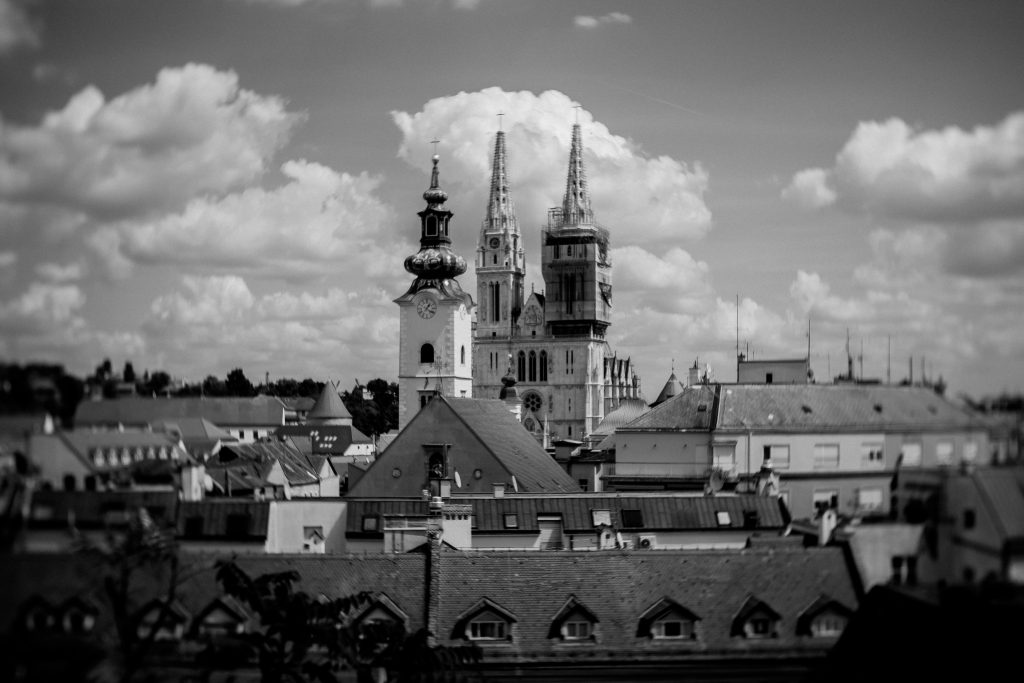August 28, 2023 – On the anniversary of its consecration and after the 2020 earthquake, the Zagreb Cathedral reminded us of forgotten information from its history. Warnings are now coming from scientific circles that the Zagreb Cathedral restoration might not be fully possible, as it’s proving difficult to find the type of stone with which it was initially built.
The cathedral was first consecrated on August 25, 1217, writes Poslovni, although it was in regular use even before that. This is evident from the ecclesiastical and secular dignitaries buried in its interior.
The Hungarian-Croatian king Andrija II. (1205-1235) went on a crusade to Palestine and came to Zagreb on his way to Dalmatia. He was accompanied by eight bishops and two archbishops who consecrated the Zagreb Cathedral.
This is stated in the most comprehensive work on the Zagreb cathedral, the work of the Zagreb canon curator Antun Ivandija, “Old Zagreb Cathedral, Historical and Artistic Discussion” (1948). The work is Ivandija’s doctoral dissertation, which was never published. The information it contains was abundantly used by the authors of the Zagreb Cathedral monograph, Ana Dejanović and Željka Čorak (1988).
Today, Zagreb Cathedral is often called Stepinčeva Cathedral. The Assumption of the Blessed Virgin Mary (Velika Gospa) is celebrated as its title, although the cathedral is dedicated to St. Stjepan Kralj.
Cathedral After the Earthquake
In the text published by the archdiocese on its anniversary, it is mentioned that after the recent earthquake, a larger part of the tombstone of Bishop Luka Baratin was discovered. The tombstone was previously known only as a fragment, and with the discoveries, it forms a whole.
However, the consequences of the 2020 earthquake are causing a headache for researchers concerned about the types of stone used for the Zagreb Cathedral restoration.
Four authors of a journal from the Faculty of Mining, Geology, and Petroleum Engineering in Zagreb, Ana Maričić, Zlatko Briševac, Petar Hrženjak and Helena Jezidžić point out that among other things, the exploitation of the stone with which the Zagreb Cathedral was built on the former sites cannot be renewed, nor is it possible to exploit the same building stone in new locations.
History of Zagreb Cathedral Restorations
Throughout history, five different types of stone were used for the construction and renovation of the Cathedral: four found locally – lithothamnium limestone, litavac, calcareous sandstone, and vinicite, and one imported, Italian travertine.
The exact quantity of each type of stone used in the construction of the Cathedral can only be determined after the restoration under the leadership of Hermann Bollé. In 1882, he used stone from Vrapče, Podsused (Bizek), Bregov near Samobor, Vinica, and Markuševac. 61.93 cubic meters were brought from Bregovo, 83.74 cubic meters from Vinica, and the largest part, 126,078 cubic meters of stone, were brought from Podsused, the article says.
In those original locations, official stone quarrying bans are currently in force, as well as negative public perception, which is why it is not possible to quarry stone for the Zagreb Cathedral restoration there, it is pointed out.
The authors from the faculty believe that it is necessary to work on finding visual representations of stone mining and to categorize these materials as public goods. They believe this will help preserve the cultural memory of this human activity.










